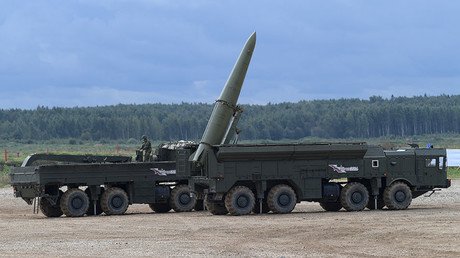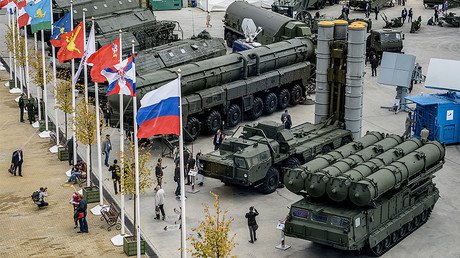Russia successfully stepping up nuclear triad modernization – Defense Minister Shoigu

Russia has stepped up the combat potential of its ‘nuclear triad,’ which is now 60 percent equipped with modern weapons, Defense Minister Sergey Shoigu said on Wednesday.
The nuclear triad is the common name for the most widespread means of delivery of nuclear charges – strategic aircraft, intercontinental ballistic missiles and submarines capable of carrying nuclear-tipped missiles.
Speaking at a session of the Defense Ministry’s collegium, Shoigu also said that 99 percent of all launchers that belong to Russian Strategic Missile Forces were in full combat readiness, with 96 percent ready to conduct actual combat launch at any time.
The Russian defense chief told senior ministry officials that President Vladimir Putin had approved how military forces have carried out the re-armament program, and had ordered for re-armament to be maintained at the current fast rate.
He also said that Russian military forces stationed in Crimea and the Arctic would be equipped with cutting-edge weapons and equipment in the nearest future.
In late February this year, recently-elected US President Donald Trump called the Russia-US agreement on nuclear cuts, the New START, “one-sided” and “just another bad deal,” and said that he wanted to rebuild the US nuclear arsenal to ensure it was at the “top of the pack.”
At the end of 2016, President Putin acknowledged the possibility of a new arms race, but noted that all prerequisites of the current situation had been created in 2002, when the US withdrew from the Anti-Ballistic Missile treaty that required it not to undermine the Russian nuclear deterrent by developing the means to intercept intercontinental ballistic missiles.
Putin also said that Russia had to upgrade its ICBMs to become invulnerable to America’s antimissile shield.
“When one party unilaterally withdrew from the treaty and said it was going to create an anti-nuclear umbrella, the other party has to either create a similar umbrella – the necessity of which we are not sure about considering its questionable efficiency – or create effective ways to overcome this anti-ballistic missile system and improve its strike capabilities,” Putin told journalists during his annual Q&A session.














